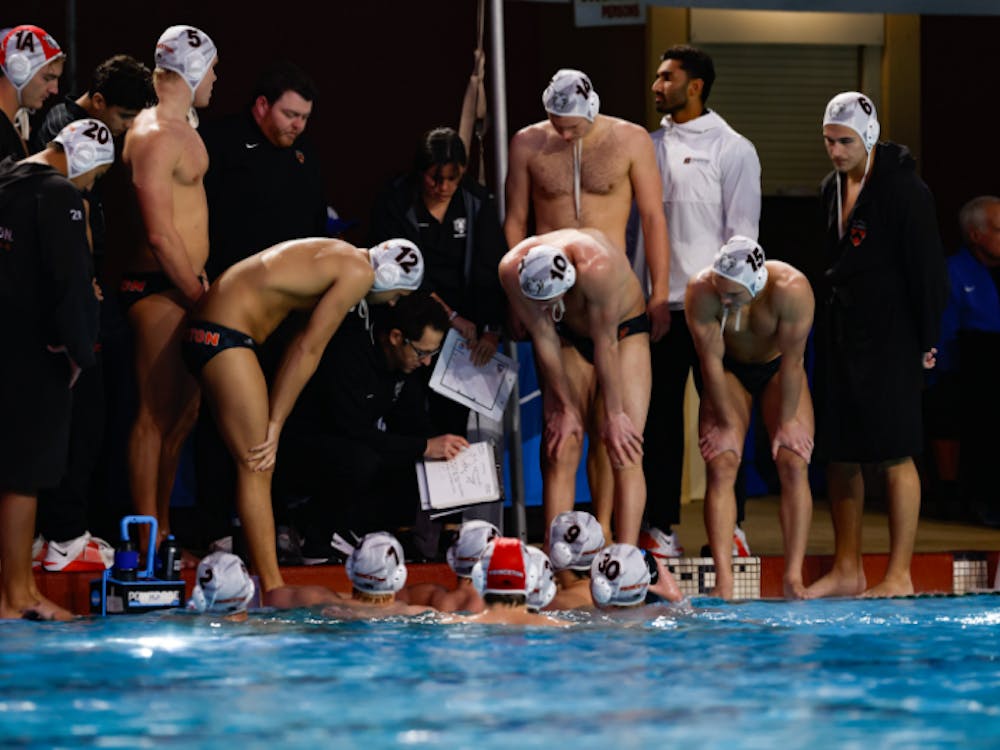With the opening of the new Lewis Center for the Arts, the University bristles with opportunities for engagement and exchange in the creative arts. Combining the disciplines of music, theater, creative writing, painting, and much more, the new center furthers the University's efforts to promote the creative humanities as a fundamental element of a liberal arts education. But, as has been the case for a long time now - even amidst such apparent flourishing in the arts, real progression is seldom made. There is great drive to move forward, but because no one wants to look back, we are left with art, but no heritage - nothing to relate to. Traditions, and thus culture, lie outside the picture.
A few days before the opening of the new center, Princeton was pleased to receive a fitting visitor: poet Alice Oswald. She recited from her Iliad-inspired poem “Memorial” and gave insights into her work in various lectures and presentations. Though a contemporary poet, Oswald’s main focus is not to produce innovative work, but rather to visit and revisit the past. In her poems, she told students at a lecture, she tries to imitate as best she can the language, imagery and “vitality” of Homer’s epics because she considers the Odyssey "a living poem.”
In our ever-changing culture, especially in a university setting- where innovation is revered among creative artists - Oswald clearly shows the success of reworking past art into the contemporary without being trite: she explores the classics in the context of present.
By rejecting traditional or previous aesthetics, many artists have made their ateliers and works domains for the intellectual elite only. Art produced by a self-conscience striving to be different only wins respect for its originality, not necessarily its quality. As a result, the study of past art remains open only to academics, because the content has no significance in the present. The making of art becomes a practice only of the sophisticated – at least the art that we are supposed to take seriously. I am in no way speaking of social classes here, for it seems clear that art attempts to make itself accessible to all. What occurs is that is that the traditional is pushed aside as common and naïve. The adherents to culture and tradition, generally the consumers of art, are thus denied participation because the “progressives” who cast off heritage succeed precisely in making art inaccessible.
For the sake of uniqueness, there is a growing drive to sever the connections between art and tradition. Art presents a means for self-expression and innovation. The result is the appreciation of old art only in the context of its own time of creation, and with no reference to other periods. Art seems to progress because so many forms are arising and they are all accepted as valid because they are charged with personal meaning. Yet, without connection to the past in structure, theme, and ideas, how can this be called progressive?
This is not to say that innovation and quality are mutually exclusive, but rather that uniqueness is not the end goal. Art must be continuous and informed by past works. If the artist continues to separate his creations from “the old stuff,” crucial ideas are lost and could very well lead to bad art – self-contained art that won’t make it out of its own era, if its only significant for a single population.
The “new” or “unique” cannot be substantial without relying on deep reflection of what already exist. The best art, just like the greatest inventions, depends on previous science and heritage, only understood by masters. Self-acknowledgement of temporal context allows the artist to reach new levels of understanding and mastery.
The traditional is communicable. It keeps the capacity to awaken the imagination of the audience. It directs towards ideas greater than the thoughts of the artist.

On entering the new Lewis Center, one can sense a great potential for creation. It may simply be its newness, its size, or the blankness of many of its walls, but what is sure is that art will be made. Yet, like the building itself, this art must have structure if it wants to achieve a proper place in the University, among disciplines that make no sense without structure. Both the humanities and the sciences all move forward (or at least they should) by contextualizing a position within their past.
The Lewis Center should present a great opportunity to change the approach to the arts. More emphasis must be placed on ideas, and not just feeling. Classes or art workshops must approach past works with the respect of an open mind and not disregard the meaning. Students should be encouraged to create and to become versed in tradition. Alice Oswald proves that this can be done with great success. She acknowledges how Homer is not just a master in his own time, and so she contributes to the themes, questions, and simply beauty that he created. In this way, artists can enter a great conversation with the past and truly add to the contemporary.
Miguel Caranti is a first-year from Houston, Tex. and can be reached at mcaranti@princeton.edu.








